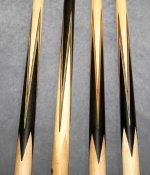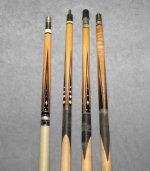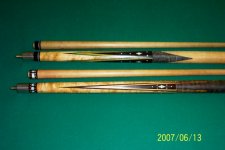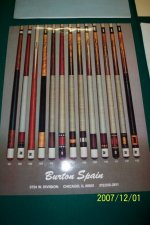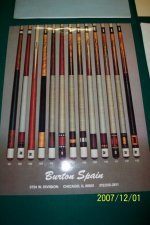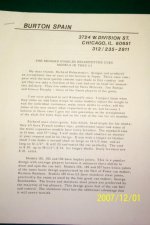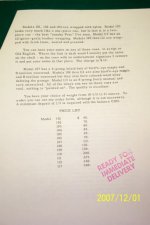icem3n said:When you say quality, what do you look for?
p/s- Chris, I send you a PM, Pls reply. tks
In most cases, it's just appearances, really. These days, we have come to expect perfect appearances because the machinery is much more accurate than it was 40 years ago. In the old days, the cue maker had to sort through a pile of Titlists to find decent ones to use.
Adam blanks use a true splice joint like Titlists and Spain's. Cue maker's tell me it's tougher to build a forearm accurately with a spliced joint (as opposed to a milled pocket or an inlaid point, the more common techniques used now) . The length of the points can be messed up in the making of the blank or the turning of it, so sometimes it's hard to tell if the forearm was made improperly or turned improperly by the cue maker. If a cue maker can get the outside points to line up evenly, there's no guarantee the inner prongs will. The veneers have to be mitered and glued up. Care must be taken in this process.
There are a lot of small things the blank maker does to improve their overall quality. I think the first thing they should do is to scrap blanks that are not good enough quality, for example if they see the points are off too much, or the veneers have a big gap in their miter. It's small things, like the miters, consistency of the veneer thickness and colors, that make a forearm look good or look flawed. A well built blank should allow everything to line up properly, outside points and inner prongs, if the lathe is properly centered.
Chris
Last edited:
